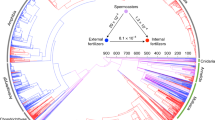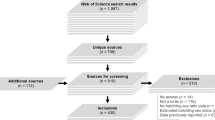Abstract
The causes and consequences of variation in sperm quality, survival and ageing are active areas of research in ecology and evolution. In order to address these topics, many recent studies have measured sperm viability using fluorescent staining. Although sperm viability staining has produced a number of interesting results, it has some potential pitfalls that have rarely been discussed. In the present paper, I review the major findings of ecology and evolution studies employing sperm viability staining and outline the method’s principle limitations. The key problem is that the viability assay may itself kill sperm, which is likely to confound many common experimental designs in addition to producing artificially low estimates of sperm viability. I further suggest that sperm number should be routinely measured in sperm viability studies, as it may be an important but overlooked source of spurious results. I provide methodological advice on sperm viability staining aimed at minimising artefacts and producing robust conclusions, and discuss possible avenues for future research.


Similar content being viewed by others
References
Angelard C, Montchamp-Moreau C, Joly D (2008) Female-driven mechanisms, ejaculate size and quality contribute to the lower fertility of sex-ratio distorter males in Drosophila simulans. BMC Evol Biol 8:12
Ashworth PJC, Harrison RAP, Miller NGA, Plummer JM, Watson PF (1994) Survival of ram spermatozoa at high dilution—protective effect of simple constituents of culture media as compared with seminal plasma. Reprod Fertil Dev 6:173–180
Baker RR, Bellis MA (1988) Kamikaze sperm in mammals. Anim Behav 36:936–939
Bernasconi G, Hellriegel B, Heyland A, Ward PI (2002) Sperm survival in the female reproductive tract in the fly Scathophaga stercoraria (L.). J Insect Physiol 48:197–203
Birkhead TR, Møller AP (1998) Sperm competition and sexual selection. Academic, London
Birkhead TR, Petrie M (1995) Ejaculate features and sperm utilization in peafowl Pave cristatus. Proc R Soc Lond B Biol Sci 261:153–158
Birkhead TR, Møller AP, Sutherland WJ (1993) Why do females make it so difficult for males to fertilize their eggs? J Theor Biol 161:51–60
Bolker BM, Brooks ME, Clark CJ, Geange SW, Poulsen JR, Stevens MHH, White J-SS (2009) Generalized linear mixed models: a practical guide for ecology and evolution. Trends Ecol Evol 24:127–135
Bressac C, Damiens D, Chevrier C (2008) Sperm stock and mating of males in a parasitoid wasp. J Exp Zool B Mol Dev Evol 310B:160–166
Civetta A, Rosing KR, Fisher JH (2008) Differences in sperm competition and sperm competition avoidance in Drosophila melanogaster. Anim Behav 75:1739–1746
Collins A, Pettis J (2001) Effect of Varroa infestation on semen quality. Am Bee J 141:590–593
Crawley MJ (1993) GLIM for ecologists. Blackwell Scientific, Oxford
Crudgington HS, Fellows S, Badcock NS, Snook RR (2009) Experimental manipulation of sexual selection promotoes greater male mating cpacity but does not alter sperm investment. Evolution 63:926–938
Damiens D, Bressac C, Brillard JP, Chevrier C (2002) Qualitative aspects of sperm stock in males and females from Eupelmus orientalis and Dinarmus basalis (Hymenoptera: Chalcidoidea) as revealed by dual fluorescence. Physiol Entomol 27:97–102
Demary KC (2005) Sperm storage and viability in Photinus fireflies. J Insect Physiol 51:837–841
den Boer SPA, Boomsma JJ, Baer B (2008) Seminal fluid enhances sperm viability in the leafcutter ant Atta colombica. Behav Ecol Sociobiol 62:1843–1849
den Boer SPA, Boomsma JJ, Baer B (2009) Honey bee males and queens use glandular secretions to enhance sperm viability before and after storage. J Insect Physiol 55:538–543
Dowling DK, Nowostawski AL, Arnqvist G (2007) Effects of cytoplasmic genes on sperm viability and sperm morphology in a seed beetle: implications for sperm competition theory? J Evol Biol 20:358–368
Eberhard WG (1996) Female control: sexual selection by cryptic female choice. Princeton University Press, Princeton
Fedina TY, Lewis SM (2004) Female influence over offspring paternity in the red flour beetle Tribolium castaneum. Proc R Soc Lond B Biol Sci 271:1393–1399
Fiumera AC, Dumont BL, Clark AG (2005) Sperm competitive ability in Drosophila melanogaster associated with variation in male reproductive proteins. Genetics 169:243–257
Fry CL, Wilkinson GS (2004) Sperm survival in female stalk-eyed flies depends on seminal fluid and meiotic drive. Evolution 58:1622–1626
Gage MJG, Morrow EH (2003) Experimental evidence for the evolution of numerous, tiny sperm via sperm competition. Curr Biol 13:754–757
Garcia-Gonzalez F, Simmons LW (2005a) The evolution of polyandry: intrinsic sire effects contribute to embryo viability. J Evol Biol 18:1097–1103
Garcia-Gonzalez F, Simmons LW (2005b) Sperm viability matters in insect sperm competition. Curr Biol 15:271–275
Garner DL, Thomas CA, Allen CH (1997) Effect of semen dilution on bovine sperm viability as determined by dual-DNA staining and flow cytometry. J Androl 18:324–331
Garner DL, Thomas CA, Gravance CG, Marshall CE, DeJarnette JM, Allen CH (2001) Seminal plasma addition attenuates the dilution effect in bovine sperm. Theriogenology 56:31–40
Grace TDC (1962) Establishment of 4 strains of cells from insect tissues grown in vitro. Nature 195:788–789
Greeff JM, Parker GA (2000) Spermicide by females: what should males do? Proc R Soc Lond B Biol Sci 267:1759–1763
Greeff M, Schmid-Hempel P (2008) Sperm viability in the male accessory testes and female spermathecae of the bumblebee Bombus terrestris (Hymenoptera: Apidae). Eur J Entomol 105:849–854
Grundler W, Dirscherl P, Beisker W, Weber F, Stolla R, Bollwein H (2004) Quantification of temporary and permanent subpopulations of bull sperm by an optimized SYBR-14/propidium iodide assay. Cytometry 60A:63–72
Hale JM, Elgar MA, Jones TM (2008) Sperm quantity explains age-related variation in fertilization success in the hide beetle. Ethology 114:797–807
Hayashi F, Tsuchiya K (2005) Functional association between female sperm storage organs and male sperm removal organs in calopterygid damselflies. Entomol Sci 8:245–252
Hernandez M, Roca J, Calvete JJ, Sanz L, Muino-Blanco T, Cebrian-Perez JA, Vazquez JM, Martinez EA (2007) Cryosurvival and in vitro fertilizing capacity postthaw is improved when boar spermatozoa are frozen in the presence of seminal plasma from good freezer boars. J Androl 28:689–697
Holman L (2009) Drosophila melanogaster seminal fluid can protect the sperm of other males. Funct Ecol 23:180–186
Holman L, Snook RR (2006) Spermicide, cryptic female choice and the evolution of sperm form and function. J Evol Biol 19:1660–1670
Holman L, Snook RR (2008) A sterile sperm caste protects brother fertile sperm from female-mediated death in Drosophila pseudoobscura. Curr Biol 18:292–296
Hunter FM, Birkhead TR (2002) Sperm viability and sperm competition in insects. Curr Biol 12:121–123
Johnson SL, Yund PO (2004) Remarkable longevity of dilute sperm in a free-spawning colonial ascidian. Biol Bull 206:144–151
Jones TM, Elgar MA (2004) The role of male age, sperm age and mating history on fecundity and fertilization success in the hide beetle. Proc R Soc Lond B Biol Sci 271:1311–1318
Linklater JR, Wertheim B, Wigby S, Chapman T (2007) Ejaculate depletion patterns evolve in response to experimental manipulation of sex ratio in Drosophila melanogaster. Evolution 61:2027–2034
Locatello L, Rasotto MB, Evans JP, Pilastro A (2006) Colourful male guppies produce faster and more viable sperm. J Evol Biol 19:1595–1602
Locatello L, Pilastro A, Deana R, Zarpellon A, Rasotto MB (2007) Variation pattern of sperm quality traits in two gobies with alternative mating tactics. Funct Ecol 21:975–981
Locatello L, Rasotto MB, Adriaenssens B, Pilastro A (2008) Ejaculate traits in relation to male body size in the eastern mosquitofish Gambusia holbrooki. J Fish Biol 73:1600–1611
Lodesani M, Balduzzi D, Galli A (2004) A study on spermatozoa viability over time in honey bee (Apis mellifera ligustica) queen spermathecae. J Apic Res 43:27–28
Malo AF, Garde JJ, Soler AJ, Garcia AJ, Gomendio M, Roldan ERS (2005) Male fertility in natural populations of red deer is determined by sperm velocity and the proportion of normal spermatozoa. Biol Reprod 72:822–829
Manríquez PH, Hughes RN, Bishop JDD (2001) Age-dependent loss of fertility in water-borne sperm of the bryozoan Celleporella hyalina. Mar Ecol Prog Ser 224:87–92
Miller GT, Pitnick S (2002) Sperm-female coevolution in Drosophila. Science 298:1230–1233
Montrose VT, Harris WE, Moore PJ (2004) Sexual conflict and cooperation under naturally occurring male enforced monogamy. J Evol Biol 17:443–452
Moore HDM, Martin M, Birkhead TR (1999) No evidence for killer sperm or other selective interactions between human spermatozoa in ejaculates of different males in vitro. Proc R Soc B Biol Sci 266:2343–2350
Moore PJ, Harris WE, Montrose VT, Levin D, Moore AJ (2004) Constraints on evolution and postcopulatory sexual selection: trade-offs among ejaculate characteristics. Evolution 58:1773–1780
Nakahara M, Tsubaki Y (2007) Function of multiple sperm-storage organs in female damselflies (Ischnura senegalensis): difference in amount of ejaculate stored, sperm loss, and priority in fertilization. J Insect Physiol 53:1046–1054
Nakahara M, Tsubaki Y (2008) Sperm mortality, insemination and fertilization in the damselfly Ischnura senegalensis: comparisons between wild and inbred populations. J Ethol 26:145–151
Parker GA (1982) Why are there so many tiny sperm—sperm competition and the maintenance of 2 sexes. J Theor Biol 96:281–294
Parker GA (1993) Sperm competition games—sperm size and sperm number under adult control. Proc R Soc Lond B Biol Sci 253:245–254
Pizzari T, Birkhead TR (2000) Female feral fowl eject sperm of subdominant males. Nature 405:787–789
Pizzari T, Dean R, Pacey A, Moore H, Bonsall MB (2008) The evolutionary ecology of pre- and post-meiotic sperm senescence. Trends Ecol Evol 23:131–140
Reinhardt K (2007) Evolutionary consequences of sperm cell aging. Q Rev Biol 82:375–393
Reinhardt K, Siva-Jothy MT (2005) An advantage for young sperm in the house cricket Acheta domesticus. Am Nat 165:718–723
Sherman CDH, Uller T, Wapstra E, Olsson M (2008a) Within-population variation in ejaculate characteristics in a prolonged breeder, Peron’s tree frog, Litoria peronii. Naturwissenschaften 95:1055–1061
Sherman CDH, Wapstra E, Uller T, Olsson M (2008b) Males with high genetic similarity to females sire more offspring in sperm competition in Peron’s tree frog Litoria peronii. Proc R Soc B Biol Sci 275:971–978
Sherman CDH, Wapstra E, Olsson M (2009) Consistent male–male paternity differences across female genotypes. Biol Lett 5:232–234
Simmons LW, Roberts B (2005) Bacterial immunity traded for sperm viability in male crickets. Science 309:2031
Simmons LW, Thomas ML (2008) No postcopulatory response to inbreeding by male crickets. Biol Lett 4:183–185
Simmons LW, Denholm A, Jackson C, Levy E, Madon E (2007) Male crickets adjust ejaculate quality with both risk and intensity of sperm competition. Biol Lett 3:520–522
Siva-Jothy MT (2000) The young sperm gambit. Ecol Lett 3:172–174
Snook RR (2005) Sperm in competition: not playing by the numbers. Trends Ecol Evol 20:46–53
Snook RR, Hosken DJ (2004) Sperm death and dumping in Drosophila. Nature 428:939–941
Stewart AD, Hannes AM, Rice WR (2007) An assessment of sperm survival in Drosophila melanogaster. Evolution 61:636–639
Swanson EW, Bearden HJ (1951) An eosin–nigrosin stain for differentiating live and dead bovine spermatozoa. J Anim Sci 10:981–987
Thomas ML, Simmons LW (2007) Male crickets adjust the viability of their sperm in response to female mating status. Am Nat 170:190–195
Thomas ML, Simmons LW (2009) Male-derived cuticular hydrocarbons signal sperm competition intensity and affect ejaculate expenditure in crickets. Proc R Soc B Biol Sci 276:383–388
Twig E, Yuval B (2005) Function of multiple sperm storage organs in female Mediterranean fruit flies (Ceratitis capitata, Diptera: Tephritidae). J Insect Physiol 51:67–74
White J, Wagner RH, Helfenstein F, Hatch SA, Mulard H, Naves LC, Danchin E (2008) Multiple deleterious effects of experimentally aged sperm in a monogamous bird. Proc Natl Acad Sci U S A 105:13947–13952
Acknowledgements
I am grateful to K. Reinhardt, S. P. A. den Boer, A. M. Schmidt and T.A. Linksvayer for helpful comments and discussion and to members of the Centre for Social Evolution for providing a stimulating work environment. This work was supported by the Marie Curie Excellence grant CODICES (MEXT-CT-2004-014202) to Dr. P. d’Ettorre.
Author information
Authors and Affiliations
Corresponding author
Additional information
Communicated by M. Jennions
Electronic supplementary material
Below is the link to the electronic supplementary material.
ESM 1
Data (DOC 32 kb)
Rights and permissions
About this article
Cite this article
Holman, L. Sperm viability staining in ecology and evolution: potential pitfalls. Behav Ecol Sociobiol 63, 1679–1688 (2009). https://doi.org/10.1007/s00265-009-0816-4
Received:
Revised:
Accepted:
Published:
Issue Date:
DOI: https://doi.org/10.1007/s00265-009-0816-4




